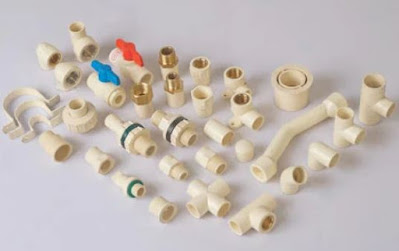Some differences between PVC and CPVC pipes
PVC pipes are flexible plastic pipes used for drainage and piping. Metal pipes have been replaced as a common material by PVC pipes. Due to its strength, longevity, simplicity of installation, and low price, PVC is the most commonly used plastic in the world. CPVC is different from PVC because of a process done to it by a cpvc pipe manufacturer called free radical chlorination. This raises the amount of chlorine in the pipe. PVC and CPVC are both thermoplastics that are used to make a variety of items.
Here are some of the differences between PVC and CPVC:
Deciding between PVC or CPVC
Both PVC and CPVC are authorized for the transportation of potable water, which is used for drinking, cooking, and bathing. Both CPVC and PVC have high chemical resistance and are virtually unaffected by most organic compounds, acids, or alkalis. Buy CPVC pipes with UV stabilizers applied on them by the cpvc pipe manufacturer to stop degradation from the sun. Or you can install the pipes underground for sun protection.
Here are some of the differences between PVC and CPVC:
Temperature tolerance difference
PVC can tolerate only temperatures of up to 140 degrees F. The PVC will melt at temperatures over 140 degrees. To give you an idea, a hot water heater's maximum temperature is often between 120 and 140 degrees Fahrenheit. CPVC can tolerate a maximum of 200 degrees Fahrenheit, which is 60 degrees more than PVC’s temperature tolerance.
The cpvc pipe manufacturer adds chlorine to CPVC to strengthen its resistance to heat. This addition also alters its strength. Both PVC and CPVC are robust, but CPVC is tougher. CPVC is more adaptable and flexible than other pipes. If the CPVC tube is long, you can support it every three feet.
Cost difference
Because chlorine is added by cpvc pipe manufacturer during the manufacturing process, the cost of CVPC pipes differs from PVC. PVC and CPVC are significantly less expensive than metal or PEX pipes. Depending on the manufacturer, a PVC or CPVC's exact cost and quality will change. Although CPVC will always be more heat resistant than PVC, temperatures exceeding 200 degrees Fahrenheit may cause it to malfunction. CPVC is often used for hot water applications due to its high cost, whereas PVC is used for cold water applications like irrigation and drainage.
Final thoughts
Because of the materials that make up CPVC, it can tolerate a variety of temperatures. Because of this, several building rules specify that CPVC should be used in hot water applications rather than PVC. Due to its makeup, CPVC is more temperature-tolerant than PVC and can withstand the impacts of excessively chlorinated water.
Visit: Reasons to choose CPVC for plumbing residential buildings




Comments
Post a Comment